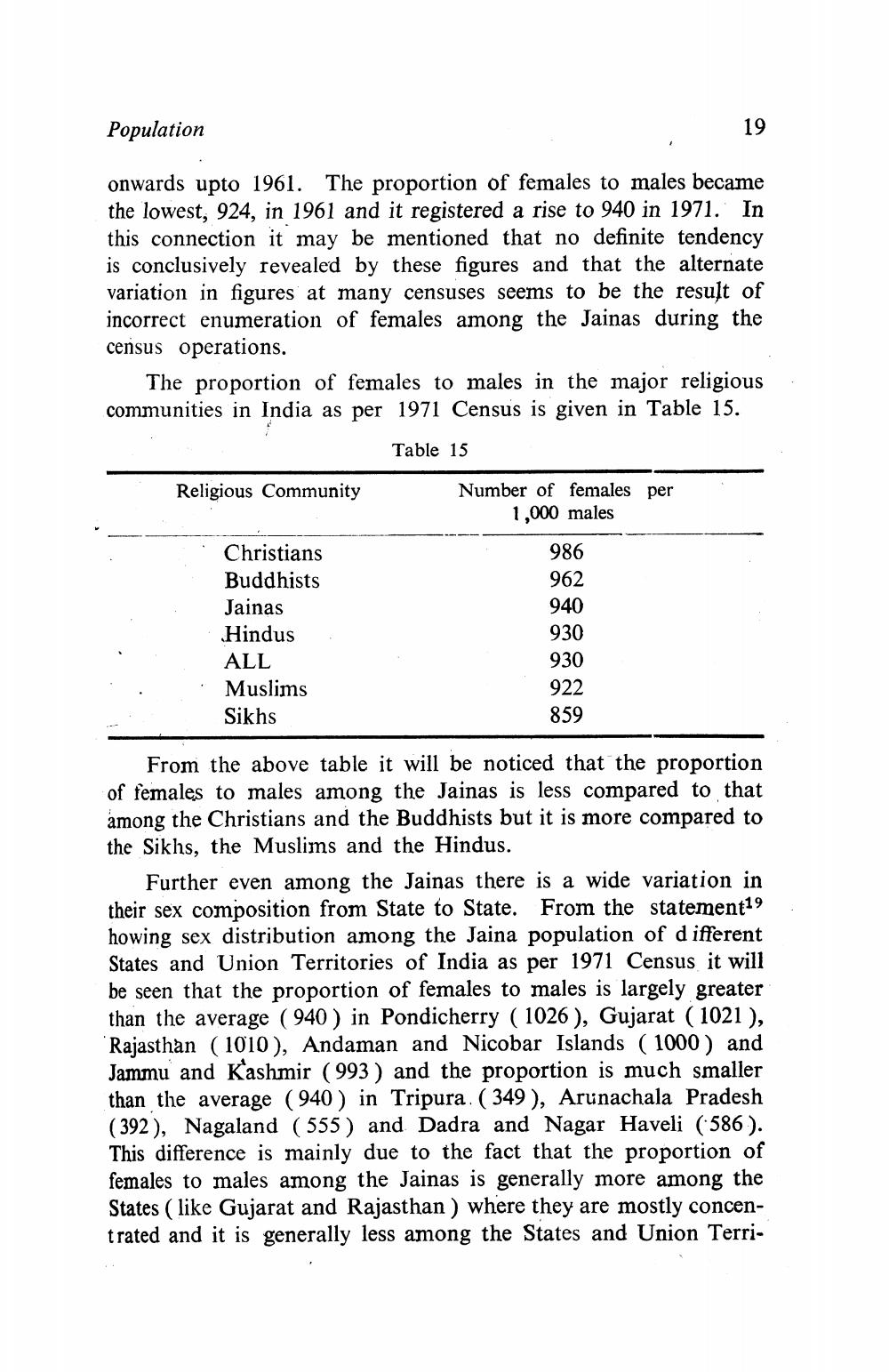________________
Population
19
onwards upto 1961. The proportion of females to males became the lowest, 924, in 1961 and it registered a rise to 940 in 1971. In this connection it may be mentioned that no definite tendency is conclusively revealed by these figures and that the alternate variation in figures at many censuses seems to be the result of incorrect enumeration of females among the Jainas during the census operations.
The proportion of females to males in the major religious communities in India as per 1971 Census is given in Table 15.
Table 15
Religious Community
Number of females per
1,000 males
Christians Buddhists Jainas Hindus ALL Muslims Sikhs
986 962 940 930 930 922 859
From the above table it will be noticed that the proportion of females to males among the Jainas is less compared to that among the Christians and the Buddhists but it is more compared to the Sikhs, the Muslims and the Hindus.
Further even among the Jainas there is a wide variation in their sex composition from State to State. From the statement19 howing sex distribution among the Jaina population of different States and Union Territories of India as per 1971 Census it will be seen that the proportion of females to males is largely greater than the average (940) in Pondicherry ( 1026 ), Gujarat ( 1021 ), Rajasthan (1010), Andaman and Nicobar Islands (1000) and Jammu and Kashmir (993) and the proportion is much smaller than the average (940) in Tripura. ( 349), Arunachala Pradesh (392), Nagaland (555) and Dadra and Nagar Haveli (586). This difference is mainly due to the fact that the proportion of females to males among the Jainas is generally more among the States ( like Gujarat and Rajasthan ) where they are mostly concentrated and it is generally less among the States and Union Terri




